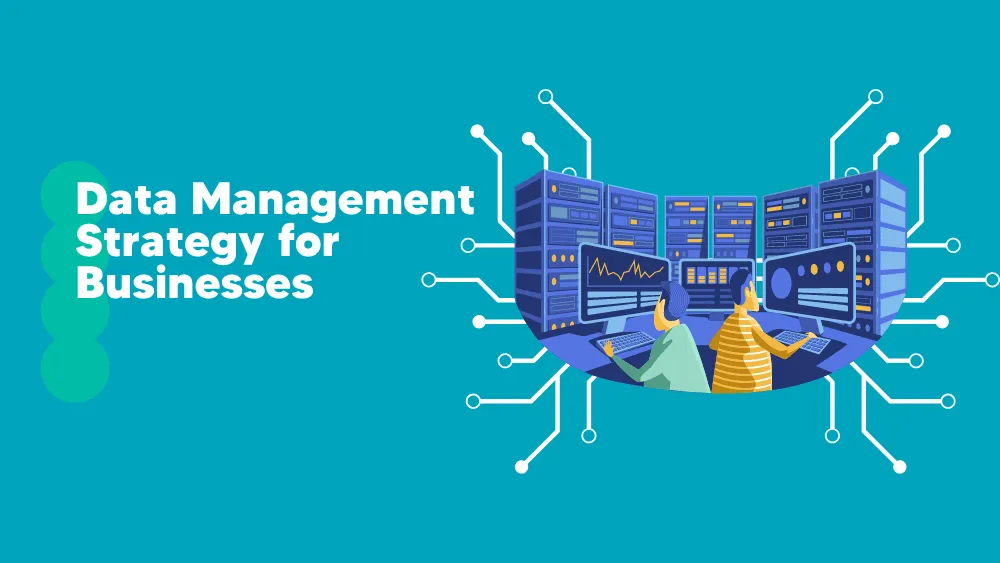Ever found yourself drowning in a sea of emails, spreadsheets, or perhaps customer reviews? You’re not alone. Today, whether you’re an entrepreneur running a fledgling startup or a decision-maker in a seasoned enterprise, you’re confronted with a tsunami of data every single day. Raw numbers, customer preferences, market fluctuations – it’s like an endless stream of puzzle pieces. But here’s the catch: You can’t analyze it all by yourself, nor can you use it in its raw, unfiltered state.
Making sense of data is critical, as it holds the key to understanding market dynamics, consumer preferences, and emerging trends. However, processing and interpreting such quantities of information is not straightforward. Enter Business Intelligence (BI). BI is the crucial tool businesses use to convert raw data into meaningful, actionable insights.
In this article, we’ll unpack the concept of BI, its workings, and its immense value in guiding businesses toward informed decisions in a data-driven world.
Definition of Business Intelligence
Business Intelligence, often abbreviated as BI, can be briefly described as the technology-driven process of transforming raw data into meaningful information to facilitate informed business decisions.
But what does it really mean?
Raw data, in isolation, holds potential but doesn’t directly lead to actionable insights. BI is the interpreter, the translator that deciphers this data, turning it into coherent narratives that can guide business strategies.
Delving a bit deeper, let’s break down the core components that make up Business Intelligence:
- Data Collection: This is the foundational step where businesses gather information from various sources, be it customer interactions, transactions, market research, or even social media activity. The goal is accumulating as much relevant data as possible to feed into the BI systems.
- Analysis: Once data is collected, the next step is to sift through it, identifying patterns, anomalies, and potential trends. By examining the data closely, businesses can glean insights about their performance, customer behaviors, and potential opportunities or threats in the market.
- Reporting: After analysis, the findings must be compiled into understandable formats. This can range from detailed written reports highlighting key insights to summaries that provide a snapshot of the current business landscape. Reporting ensures that stakeholders have a clear view of the data’s implications.
- Visualization: For many, a visual representation of data is easier to understand and digest than sprawling spreadsheets or lengthy reports. Visualization tools, like charts, graphs, and dashboards, translate complex data sets into visually appealing and easily interpretable formats. It aids decision-makers in grasping the bigger picture at a glance and making quicker, informed choices.
In essence, Business Intelligence is like the brain of an organization. It takes in raw data (akin to sensory inputs), processes and analyzes it, and then presents the results in understandable formats, guiding the business’s subsequent actions and strategies by making sense of data.
Benefits of Business Intelligence
The following benefits – tangible and measurable, make it clear that Business Intelligence is not just something you see in posts, guides, and seminars. When harnessed effectively, it’s a game-changing tool that can propel a business to new heights in the competitive market.
Improved Decision-Making through Data-backed Insights
The age-old adage “knowledge is power” has never been truer. In a survey by Dresner Advisory Services, over 90% of businesses emphasized that data-driven decision-making is crucial to their company’s growth.
Gone are the days when leaders solely depended on gut instincts. Today’s businesses recognize the power of merging intuition with data analytics. BI offers comprehensive insights, blending real-time data with historical metrics. By leveraging these insights, businesses can significantly minimize risks and ensure decisions align with their strategic vision. For instance, a retail company might use BI to understand seasonal purchase patterns, adjusting their inventory and marketing strategies accordingly.
Spotting Market Trends and Gaining Competitive Advantage
Change is the only constant in the business world. With markets evolving at breakneck speed, anticipating trends becomes invaluable. According to a report by Forrester, firms with advanced insights-driven business (IDB) capabilities continue to outpace their competition and deliver better growth than less mature firms. This underscores the pivotal role BI plays in trend detection. By parsing vast datasets and discerning patterns, BI tools empower businesses to preemptively adjust to market shifts, ensuring they stay ahead of the curve.
Enhancing Operational Efficiency
Efficiency is the backbone of a successful business operation. Yet, even the most streamlined businesses can have hidden inefficiencies that drain resources. BI is a magnifying glass, revealing areas where processes might be redundant or resources misallocated. A classic example is the airline industry. Airlines like Delta have leveraged BI to optimize flight routes, crew scheduling, and maintenance tasks, leading to significant cost savings and enhanced operational efficiency.
Predicting Customer Behavior and Increasing Sales
Understanding customers is the bedrock of any successful marketing strategy.
According to a study by McKinsey, businesses that leverage customer analytics are 23 times more likely to outperform competitors in terms of new customer acquisition
Best Practices and Tips for a successful BI implementation
The journey to harnessing the power of Business Intelligence (BI) is paved with both challenges and opportunities. As organizations embark on this path, certain foundational strategies can make the difference between a successful BI implementation and one that falls short of its potential.
Let’s delve into these critical best practices, starting with the importance of setting crystal-clear objectives.
-
Set Defined Objectives
Every Business Intelligence (BI) endeavor begins with a purpose. Establishing clear, well-articulated objectives at the outset is essential to give direction to the BI initiative. These objectives, derived from the organization’s strategic goals, shape the BI framework’s design, data integration, and analysis methodologies. By defining specific goals and corresponding Key Performance Indicators (KPIs), organizations set a benchmark against which the BI initiative’s success can be measured. These KPIs act as tangible metrics, guiding teams and providing a measurable outcome.
Moreover, a clearly defined mission isn’t just a roadmap—it’s a unifying force. It aligns different departments with a common goal, ensuring everyone understands their role in the BI journey. This collective understanding not only minimizes resistance (a common challenge during the introduction of new technologies) but also ensures the presence of a sense of shared enthusiasm, enhancing organization-wide participation in BI processes.
-
Assess and Integrate Data Sources
Data forms the lifeblood of any BI initiative. But data, when scattered across multiple sources and departments, can be a roadblock. In many organizations, data resides in silos—be it due to departmental structures, legacy systems, or the use of disparate software tools. Such fragmentation poses a challenge for BI tools that require a consolidated data view for accurate analysis.
The solution lies in a thorough assessment of these data sources, understanding where data resides, its nature, and its relevance to the BI objectives. Post-assessment, a strategic integration process is vital to bring this data into a centralized system.
By merging data from various sources, organizations create a unified data landscape, paving the way for seamless analytics. This consolidation not only simplifies data access and analysis but also reduces data redundancies and inconsistencies, ensuring more accurate and holistic insights.
-
Opt for Intuitive Data Visualization
While raw data provides the foundation for insights, its sheer volume and complexity can make interpretation a challenge. Here’s where data visualization steps in. Through visually appealing charts, graphs, and dashboards, complex data sets are transformed into comprehensible visual stories.
By converting data into visual formats, patterns, trends, and anomalies become instantly recognizable. Such intuitive visualizations cater to a broader audience, ensuring even those without a deep analytical background can understand and act on the insights.
Another advantage of compelling visual presentations is their adaptability. They can be customized, shared, and even embedded in presentations or reports, making them indispensable tools for decision-makers. As a bonus, aesthetically pleasing visualizations naturally garner more attention, encouraging a wider user base to interact with and adopt BI tools.
-
Prioritize Self-Service Analytics
The power of BI is fully realized when it is democratized. Self-service analytics embodies this principle. Instead of a centralized model where only a handful of experts handle data analytics, self-service analytics empowers every individual, irrespective of their technical prowess, to explore data.
With user-friendly interfaces and intuitive tools, self-service analytics platforms allow users to filter, sort, and analyze data as per their unique requirements. This not only accelerates data-driven decision-making (as users don’t have to rely on IT teams for reports) but also promotes a deeper understanding of data, fostering a genuinely data-driven organizational culture.
-
Regularly Review and Optimize
In the ever-evolving business landscape, stagnation is not an option—neither for businesses nor for their BI initiatives. Regular reviews and optimizations are crucial to ensure that BI tools and strategies remain aligned with organizational goals and the market’s changing dynamics. Feedback loops involving employees who interact with BI tools provide invaluable insights into potential bottlenecks, usability issues, or areas of improvement. Coupled with KPI tracking, these feedback mechanisms ensure that the BI system remains robust, relevant, and responsive to the organization’s needs.
By committing to a continuous improvement approach, organizations can adapt their BI strategies, making them more resilient and better equipped to harness the ever-growing data deluge.
Conclusion
The beauty of BI is its multifaceted nature. From improving operational efficiency to anticipating market trends, from harnessing the power of visualization to democratizing data analytics via self-service platforms, BI plays a pivotal role in various facets of a business. As we’ve explored, by implementing BI best practices, organizations can cultivate a data-driven culture, one where decisions are backed by hard evidence rather than mere hunches and gut feelings (useful as they may be).
But, as with all technological tools, the potency of Business Intelligence isn’t just in its advanced capabilities but in its sensible application. The organizations that thrive will be those that don’t just adopt BI but adapt it to their unique challenges and goals, continuously refining their strategies in response to a changing business landscape.
In conclusion, Business Intelligence isn’t just a thing that you often hear or a fancy tool for the tech-savvy. It’s a transformative force, one that can elevate businesses from merely surviving in a data-heavy world to truly thriving in it. The future belongs to those who can turn data into decisions. With BI at its helm, businesses are well-equipped to navigate the exciting challenges and opportunities that lie ahead.





